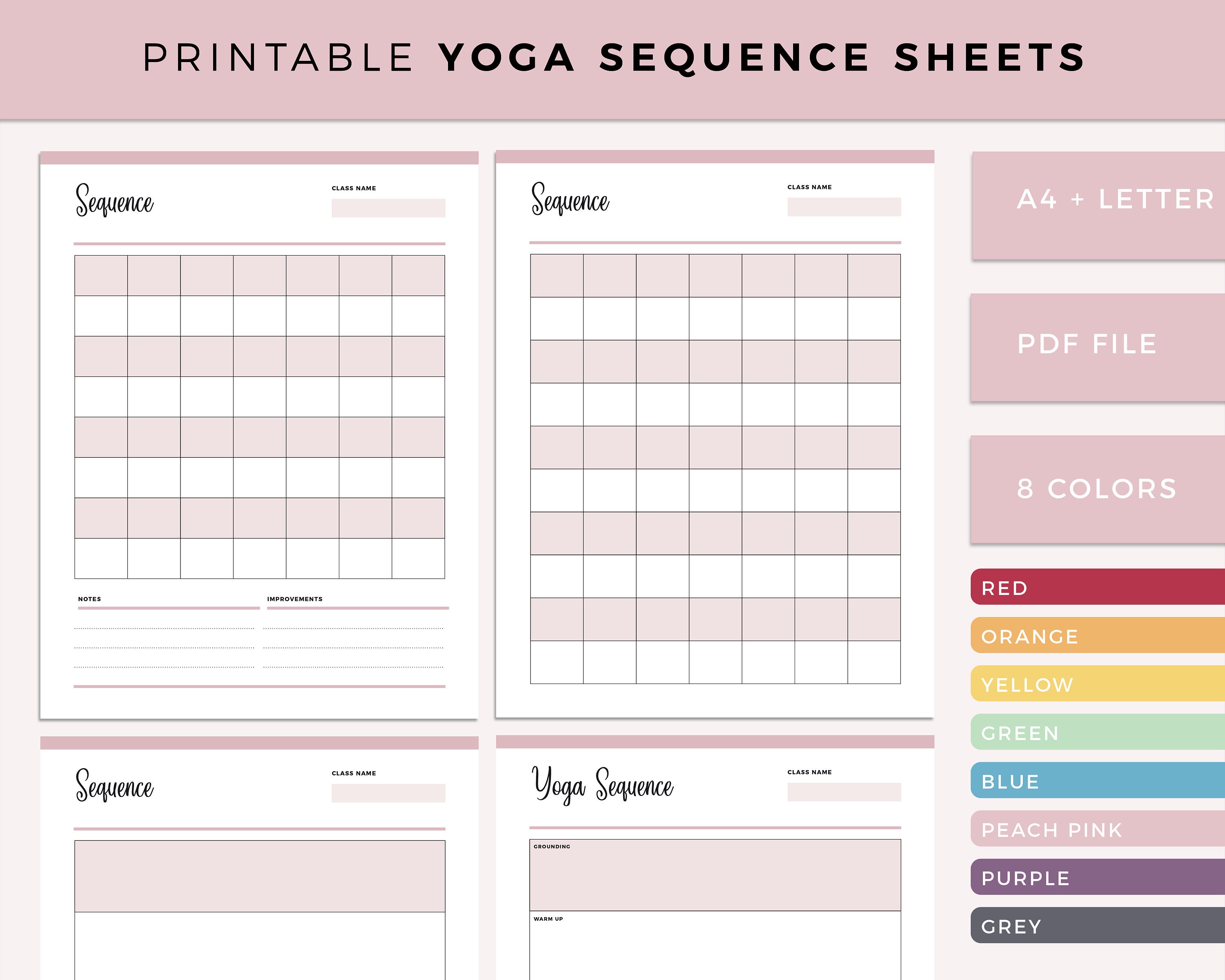
The Yoga Sutras, or Patajali's Yoga Sutras, are a collection 196 Sanskrit texts. The texts were written in Sanskrit by Patanjali (a Sage who synthesised wisdom from the older traditions of Yoga) and were assembled in the early century CE. These sutras were originally a work in progress. They are now one of the most important resources for practicing yoga worldwide.
The Yoga Sutras are comprised of four chapters. The first chapter is dedicated to enlightenment, while the four following chapters are about the journey to that goal. The 52 sutras detail the benefits meditation, kriyas and niyama (pilates) have. The 54/55 sutras detail Ashtanga and Karma yoga. The last two sutras explain the benefits of meditating on a regular basis.
Patanjali's Yoga Sutras, which contain 196 verses that form the basis for the practice of yoga, are considered the foundational text in yoga. Although they date back to 400 B.C. scholars believe Patanjali wasn't the original creator of yoga but rather an excellent expounder of it. The sutras are divided into five levels, or padas.
Samadhi is the eighth limb. This state of pure contemplation and meditation is the highest goal in yoga. The Sutras define nirbijasamadhi as "seedless contemplation" or when the mind and body are separated from the spirit. This means that the mind can be freed from any ego and matter.

Yoga is a spiritual endeavor, and the Yoga Sutras provide the basis for this practice. It is a way to observe the principles of nature. The three nature qualities are sattva (rajasa), tamasva (tamasva). The sattva Yama is the first and greatest, but it can also be the most difficult. It's hard to understand the purpose of the other three, but ahimsa is the highest of the four.
The Yama, Niyama, and Third sections make up the first book of Yoga Sutras. The first is a biography of Patanjali, a biography of the famous yogi. The most important yoga sutras can be found in the second volume. The books also contain information about the history of yoga. The sutras contain detailed discussions of the history and origins of the practice.
In the original text the Sutras from Patanjali are split into four distinct sections: Mahabhashya. Pranayama. Bhashya. The Mahabhashya third chapter is an important part of the book. It outlines the theory and practice of yoga and explains the different stages of enlightenment. The fourth chapter deals with Panini's defense.
The Yoga Sutras make up the majority of the Patanjali inspired texts in the second part of this book. Although the Sanskrit language word sutras are translated, their meaning is "thread". The Sutras can be considered a part Hindu Scripture. It is the foundation of yoga. It was composed between 250 BCE and early centuries in the first millennium.
Yoga Sutras have a dense, intricate, and complex language and content. Because of their difficulty, a commentary on the Yoga sutras is highly recommended. However, it is not an integral part of Yoga sutras. Although there is disagreement about the translations of Yoga sutras, the text remains the heart of the book. Some versions of the book use the term "asana" for a single posture; others have multiple versions.

The Yoga Philosophy of Patanjali's Sutras is considered to be one of the most important yogic texts. You can learn the Sutras whether you are looking to do yoga in modern times or the old techniques. They're relevant to modern-day yoga. The Yoga Sutras are yours to follow. The Yoga Philosophy of Patanjali offers many benefits.
The vast majority of sacred texts contain Patanjali’s insights. His writings define the eight limbs of yoga, the five types of yogi bodies, and the five qualities of a yogi's mind. These Sutras are a great source of inspiration for modern yogis, and should be read and studied. This book will help to understand the basics of Yoga.
FAQ
Is weightlifting more effective at burning fat?
Although weight lifting can help you lose fat more quickly, it is best to combine it with cardio exercises.
It is important to do weightlifting right after cardio exercise in order to reap the full benefits.
Weightlifting, when done properly, increases your heart rate.
But if you do not combine it with cardio, you will not see any significant changes in your body composition.
Cardio Exercise: Good or Bad for Your Health?
Cardiovascular exercise can have many benefits. It increases blood circulation, strengthens the heart muscle, boosts stamina, aids in weight loss, and gives you more energy.
Cardiovascular exercise includes running, biking, hiking, swimming, tennis, basketball, soccer, volleyball, football, etc.
It is important to keep in mind that cardio exercises should not only be performed at a high level of intensity, but also at low levels. Doing this could lead to injury.
You should only perform the cardiovascular exercise if you are feeling well.
Don't push yourself beyond what you can handle. In this way, you may injure or even kill yourself.
Cardiovascular exercise is best done warm-up first. Then, gradually build up to higher intensity levels.
Remember, you should always listen to your body. If you feel pain, stop doing cardio exercise immediately.
Also, after a cardiovascular workout, it's advisable to take a rest. This will allow your muscles to rest.
To lose weight, you should include cardiovascular exercise in your daily routine.
It is the best method to lose calories and reduce belly weight.
Do I have to exercise while drinking alcohol?
Yes. Alcohol can increase energy expenditure, speed recovery time, and reduce soreness.
Additionally, alcohol can increase insulin sensitivity and make it easier to absorb glucose.
However, alcohol can cause dehydration, which can slow down your metabolism. Alcohol can also lower testosterone production, which could lead to a decrease in muscle-building potential.
Women shouldn't consume alcohol before exercising. Women who are heavily alcoholic should wait at minimum 24 hours before starting to work out.
Breastfeeding women should stay away from alcohol.
Men should limit their intake to one drink per day.
Statistics
- An estimated calorie range for moderately active adult males falls between 2,200 to 2,800 calories per day, depending on age. (eatright.org)
- 10 pounds in a month is likely during a lean bulking phase, especially for beginners. (muscleandstrength.com)
- Get free shipping and 25% off today. (healthline.com)
- The PRS enabled risk stratification for overall prostate cancer and lethal disease with a four-fold difference between men in the highest and lowest quartiles (HR, 4.32; 95% confidence interval [CI], 3.16-5.89). (pubmed.ncbi.nlm.nih.gov)
- Are You One of the 20% of Guys (mh.co.za)
External Links
How To
How does a man become fit in just 30 days?
Breaking down your fitness goals into smaller, more manageable steps is the best way for you to reach your fitness goals.
It is important to work towards your goal every day. This could include anything from 10 pushups that last 5 minutes to running 3km.
Positive results will be achieved if you do this consistently over time.
Be consistent is key. It is important to persevere until you succeed.
What is the main difference between Aerobic Fitness or Anaerobic Fitness
Anaerobic fitness describes the body's ability not to use oxygen to perform intense physical tasks. Anaerobic pathways are used when there is intense exercise to provide sufficient energy. Anaerobic pathways are glycolysis, creatinephosphate and the phosphagen.
Cardio fitness is, in contrast to aerobic fitness, the practice of sustaining low-intensity exercise. While performing aerobic exercises, oxygen is used as the primary source of fuel for the cells. In other words: The aerobic pathway gives more energy than that of the anaerobic.
To run a marathon you need to first increase your aerobic capacity. If you are only focusing on increasing your anaerobic capabilities, you won't finish the race.
Aerobic fitness also refers to cardiovascular fitness. The two most common methods of measuring cardiovascular fitness are VO2 max testing and step tests.
Tests for VO2 Max
VO2 max is the maximal amount of oxygen (O2) that the body uses during exercise. This test measures the amount O2 that the body can use when exercising.
This test measures cardiovascular fitness in a way that is most accurate. However, it requires expensive equipment and highly trained professionals to administer the test.
Step Tests
Step tests are an easy but powerful way to determine your cardiovascular fitness. These are based on your weight and age, they require you to run or walk on a track.
These tests are inexpensive, easy to conduct, and can be done almost anywhere. You can for instance walk on a treadmill 2 minutes, then stop for 1 minute. Throughout the session your heart rate should not exceed a specified range.
This protocol is called the "Bruce Protocol". Bruce was himself a runner and developed the protocol after realizing his heart rate wouldn't increase when he ran for longer distances.